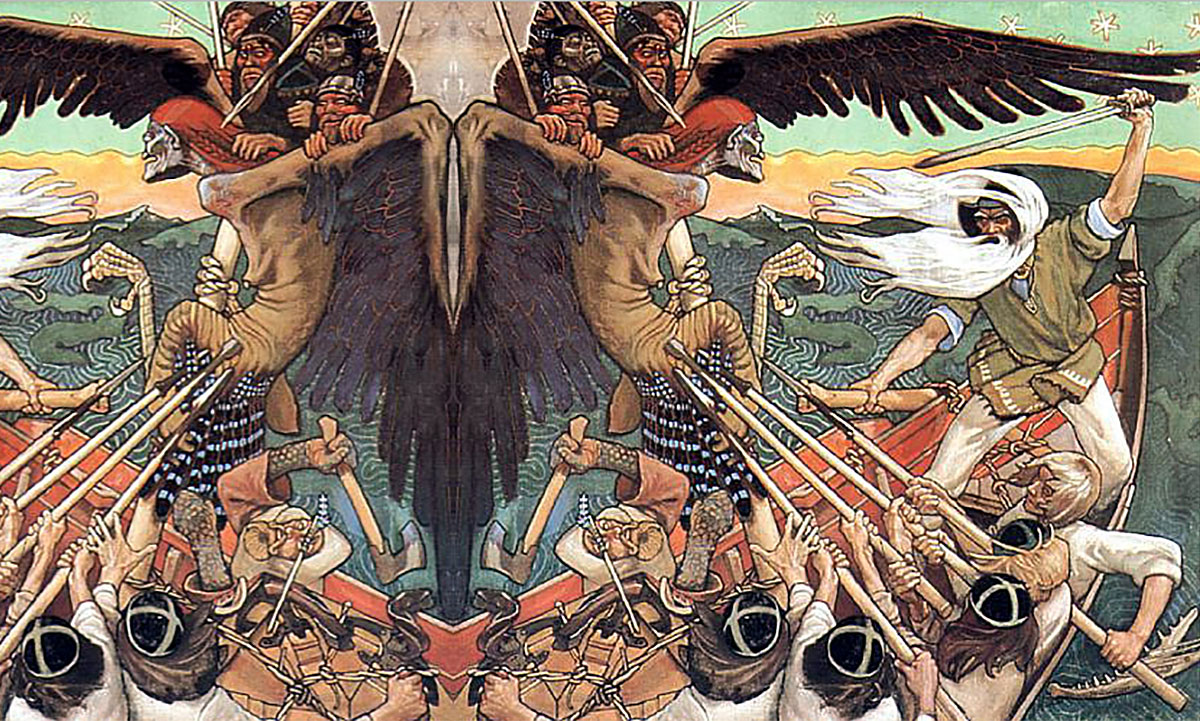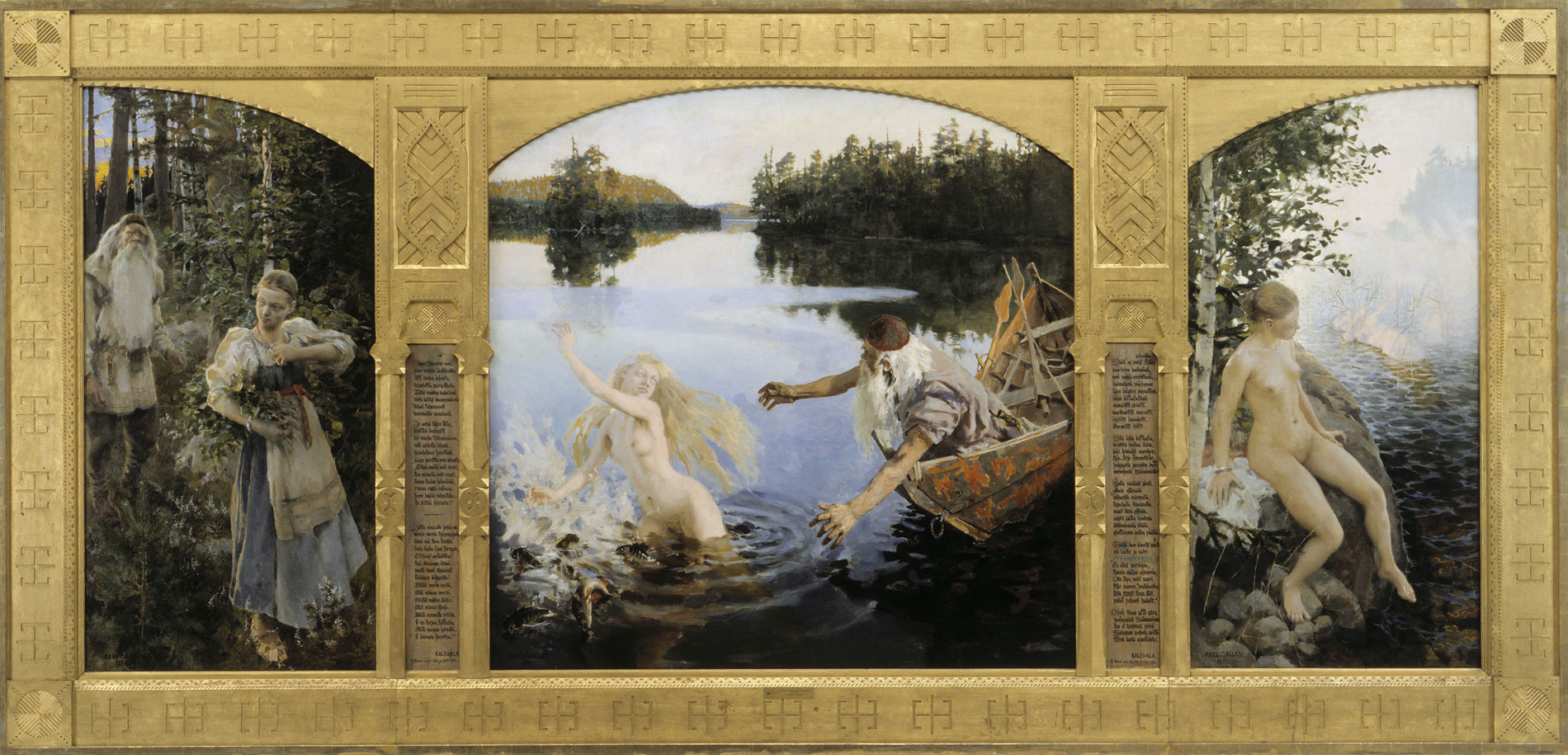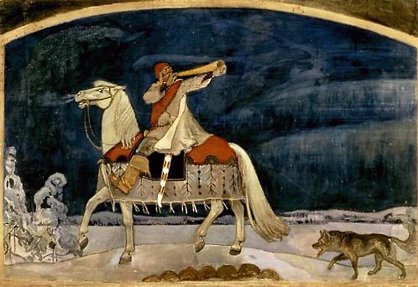
Väinämöinen is an ancient hero, the most famous Finnish hero. We do not know its original legend, it has been transmitted orally for an incredible number of generations. The only written record of his epic, is very recent: a little less than two centuries.
Kalevala is an epic composed in the nineteenth century by folklorist and physician Elias Lönnrot, based on folk poems from Finnish mythology transmitted orally. It is considered the Finnish national epic and is one of the most important works in Finnish. A first version, published in 1835, was followed in 1849 by a considerably enlarged edition of about 23,000 verses.
Kalevala is a kind of patchwork, obtained by assembling authentic folk poems collected between 1834 and 1847 in the Finnish countryside, especially in Karelia. This poem represents the cornerstone of Finnish national identity. This epic has influenced many Finnish artists and, through its translation into 51 languages, is world famous. (source)
Yes, a patchwork, because it is not a mere legend, but a whole collection of facts relating to the origin of men and the portrait of their gods. In a way, Kalevala does the same job as this website. Is not the Saga of Eden a patchwork of disparate articles whose only common point is to describe our origins and the brilliant civilization of the former gods?
The Kalevala (which means Kaleva’s country, the emphasis on the first syllable) is a kaleidoscope of stories ranging from myths, legends, to others more heroic, epic or lyrical, and which are partly independent one another.
The main character is bard Väinämöinen, a magician who plays kantele, the Finnish stringed instrument. He is the son of Ilmatar, the goddess of the Air and the mother of Water. The Kalevala begins with a story of creation, where the sky, the Earth, the Sun and the Moon are born from duck eggs that are deposited on the knee of Ilmatar. Väinämöinen appears from the first song. (source)

Väinämöinen is a bard, a storyteller of legends. Is he not in the best position to tell us those before, their prowess and their exploits? I can not help, modesty aside, to compare myself to this illustrious poet.
I do not have a taste for adventure or its epic side, I do not handle the weapons of Hyperborea – or Asgard, as say the Nordics – I was not raised in the Gods in their country of heaven, I am only a modest legend craftsman. Not that I’m a legend myself, I’m too alive for that. Legendary’s delight. I sculpt, fashion and distribute old legends, restoring them to give them the youthfulness they deserve, and edit them. Right here. Free.
Moreover if you enjoyed my stories, if my visions have delighted you, if my words help you progress, a little help will help me to close my accounts. Remember to donate. I count on you. This is a case that presents itself. A golden bargain. I offer you to barter a little base metal against the pure gold of these tales and these teachings. No joke. Think it over.
Life and love can not be bought. Neither healing nor enlightenment. But you can help the helper.
Väinämöinen has remarkable similarities with the great poet and musician Orpheus of Greek mythology. Orpheus is also renowned for his knowledge and poetry, and, like Väinämöinen, he plays his string instrument in such a moving way that all nature softens and comes to marvel. Orpheus also travels to hell and comes back. And like Väinämöinen, Orpheus will be the object of mystical worship and a cult reminiscent of shamanism: Orphism. (source)
Okay, I’m not Orpheus, I’m not Väinämöinen. Unlike a certain megalomaniac fashion designer, I do not pretend to believe that I belonged to the glorious people of the Elohim. Yet, like them, I write poems and legendary stories, I am fascinated by the ancient giants, those great elders to whom we owe so much, these genetic geniuses who have shaped our species, the fifth humanity. They have the weight of millennia for them, but what would they do if the past does not exist?
Like Orpheus and all the others, heroes endowed with superhuman strength, fabulous giants, with infinite powers, what have they become? Are they dead today? I think they talk to us. They warn us of their near return. I want proof of this: the revival of shamanism and the relative disaffection of religions in place in favor of more exotic beliefs, Buddhism, Taoism, nagualism, tarology, Sufism, pantheism, fetishism, African rites, Aborigines, Papuans, Amerindians rites and beliefs …
I do believe and I am not alone. Other awakened ones see the signs in the sky and on the ground, in the air, on the sea, in the overpowering glare of the sun, in the terrible force of the full moons during heat wave, in the deep desire of change which grows in the heart of the living creatures.

In Finnish mythology, Lemminkainen is a hero endowed with supernatural powers and magical means. He is killed by a shepherd who puts him in pieces. His mother picks up the pieces but fails to restore his life. We recognize this time the myth of Osiris, cut in pieces by Seth, his killer, his brother.
In the picture above, Lemminkainen’s mother watches over her son’s body, and it strangely reminds us of the Virgin Mary watching over the body of Jesus as he descended from the cross. Orpheus, Osiris, Jesus, all ancient legends are found in this epic of the great north.
In other passages, one finds the personality and the exploits of Sumerian heroes like Gilgamesh, Irish like Cuchulainn, or Greek like Cuchulainn.
Song 50 echoes the New Testament. There is the virgin Marjatta, identified with the Virgin Mary of the Abrahamic religions. Marjatta is not fertilized by the angel Gabriel or the holy spirit, but by a plant of the bilberry type (source).
This legendary corpus, though written late, reproduces in its earlier oral tradition all the striking features I have found in other mythologies. With Kalevala, we can once again see the persistence and permanence of legends which, by repeating themselves, tend to prove that they are not. How to tax legends or myths facts that seem to be historical? The only thing that prevents historians from recognizing them as such is their improbability.

And it is precisely this improbability that reinforces me in the idea that they retrace real facts.
When historians change their glasses, their myopia will become tolerable.


